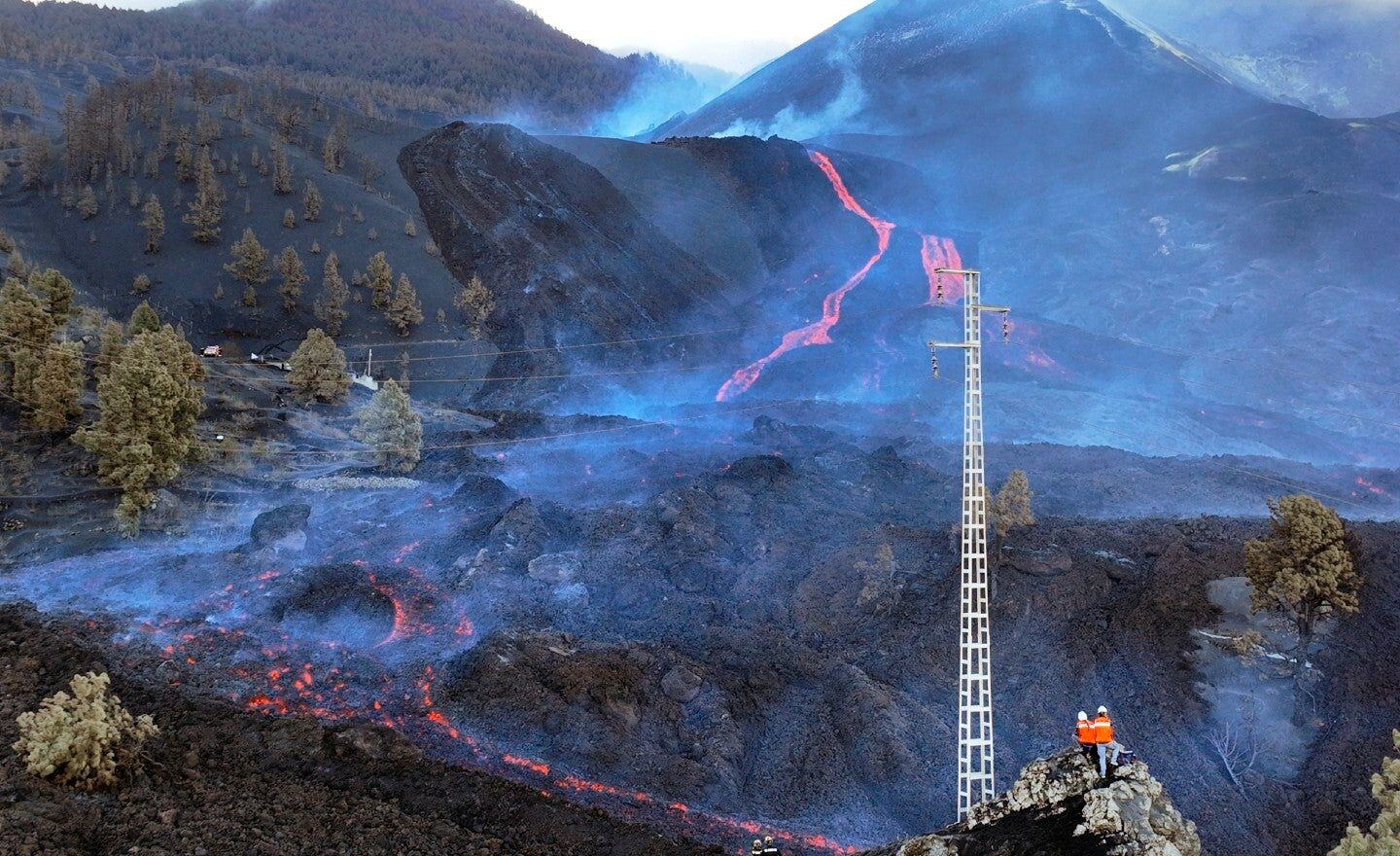
The Cumbre Vieja volcano has been erupting since September on La Palma, a small island in the Canary Islands of Spain. So far, nearly 1,150 buildings and surrounding land has been destroyed, according to Reuters.
According to an analysis by The Associated Press, volcanic eruptions to this degree are incredibly rare, occurring once, or at most twice, in a generation in the Canary Islands. Parts of the Canary Islands are actually still growing, as magma accumulates underneath and, as is happening in La Palma, lava peninsulas are forming beyond the coastline.
The Smithsonian Institution estimates there are currently 48 volcanoes currently in "continuing eruption status" worldwide.
In order to help ease the devastation the Cumbre Vieja volcano continues to cause, scientists are flocking to La Palma to study the eruption up close. They're hoping to learn how volcanoes form, develop and how and when they stop erupting.
Scientists are bringing the latest technologies to study the rare volcanic eruption from land, sea and air in especially unique circumstances, as the Cumbre Vieja volcano is only an hour's drive from the airport and scientists are allowed to work under the escorts of military brigades.
"There has been a lot of progress in the last 30 or 40 years in the understanding of geological and evolutionary processes, but it's still difficult to know for sure what happens at 40 to 80 kilometers (25 to 50 miles) of depth," Pedro Hernández, an expert with the Canary Islands' volcanology institute, Involcan, told the AP.
When magma started accumulating deep under the Cumbre Vieja volcano, scientists were measuring the seismic activity and other signs that might indicate another eruption was coming. Though they couldn't predict the exact timing of the eruption, their work did prompt local authorities to begin evacuating residents hours before the first eruption happened on Sept. 19.
According to the AP, scientists' work has centered on trying to predict how far the volcano's damage will run, as La Palma has already lost thousands of homes and farms and destroyed local roads and crops.
Hernández said it would take at least two weeks of consistent decreases in soil deformation, sulfur dioxide emissions and seismic activity to determine whether the volcano's activity is finally slowing down.
"It's like treating a patient," Esteban Gazel, a geochemist with Cornell University in New York, also told the AP. "You can monitor how (the eruption) evolves, but saying exactly when it will die is extremely difficult."



These so called so called scientists 🤪🤪 need to get a proper job and stop fanny boying 🤔 🙃 🤪 around pretending something new is happening.